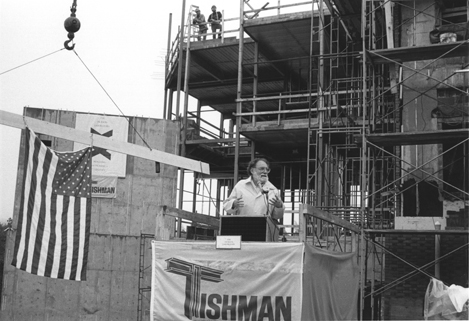
Faculty Research 1990 - 1999
Transplantation analysis of B cell destruction in (NOD x CBA)F1 mouse bone marrow chimeras.
Document Type
Article
Publication Date
1990
Keywords
B-Lymphocytes: im, Bone-Marrow-Transplantation: im, Chimera, Diabetes-Mellitus-Experimental: im, Graft-Survival, Immunity-Natural, Immunization-Passive, Islands-of-Langerhans: tr, Major-Histocompatibility-Complex, Mice, Mice-Inbred-CBA, Mice-Inbred-Strains, Pituitary-Gland-Anterior: cy, SUPPORT-U-S-GOVT-P-H-S, T-Lymphocytes: im
First Page
84
Last Page
92
JAX Location
1908
JAX Source
Diabetologia 1990 Feb; 33(2):84-92.
Grant
DK27722, DK36175
Abstract
F1 hybrids produced by outcross of non-obese diabetic (NOD) mice with diabetes resistant strains are also diabetes resistant. This resistance is abrogated if F1 hybrids are lethally irradiated and then haematopoietically reconstituted with NOD bone marrow. This model was employed to determine whether T lymphocyte recognition and elimination of pancreatic B cells in NOD mice is restricted by the MHC haplotype of the target B cell. Diabetes resistant (NOD/Lt x CBA/J)F1 hybrids were lethally irradiated and reconstituted with NOD/Lt bone marrow. Following haematopoietic reconstitution, donor matched NOD/Lt or CBA/J pancreatic islet and anterior pituitary grafts were grafted under a renal capsule to determine whether effector cells derived from NOD/Lt marrow progenitors would reject islet grafts in a MHC restricted fashion. The H-2k haplotype expressed by CBA/J mice differs from all known loci of the unique H-2 haplotype of NOD; therefore, if NOD/Lt T lymphocytes eliminate pancreatic B cells in a MHC restricted fashion. NOD islet grafts would be eliminated in these chimeras while CBA islet grafts would be retained. Overt diabetes developed in 80% of the female and 40% of the male F1 hybrids following reconstitution with NOD/Lt marrow, while no hybrids reconstituted with CBA/J marrow became diabetic through a year of age. The retention of CBA/J skin and pituitary grafts in NOD/Lt marrow reconstituted F1 hybrids confirmed that the F1 thymic environment imparted tolerance to CBA/J alloantigens. Nonetheless, responses to a T cell dependent model antigen were restricted to the unique MHC haplotype of NOD. This was associated in the hyperglycaemic chimeras with rejection (8-21 days post-implantation) of both CBA/J and NOD/Lt islet grafts.(ABSTRACT TRUNCATED AT 250 WORDS)
Recommended Citation
Serreze DV,
Leiter EH,
Shultz LD.
Transplantation analysis of B cell destruction in (NOD x CBA)F1 mouse bone marrow chimeras. Diabetologia 1990 Feb; 33(2):84-92.

